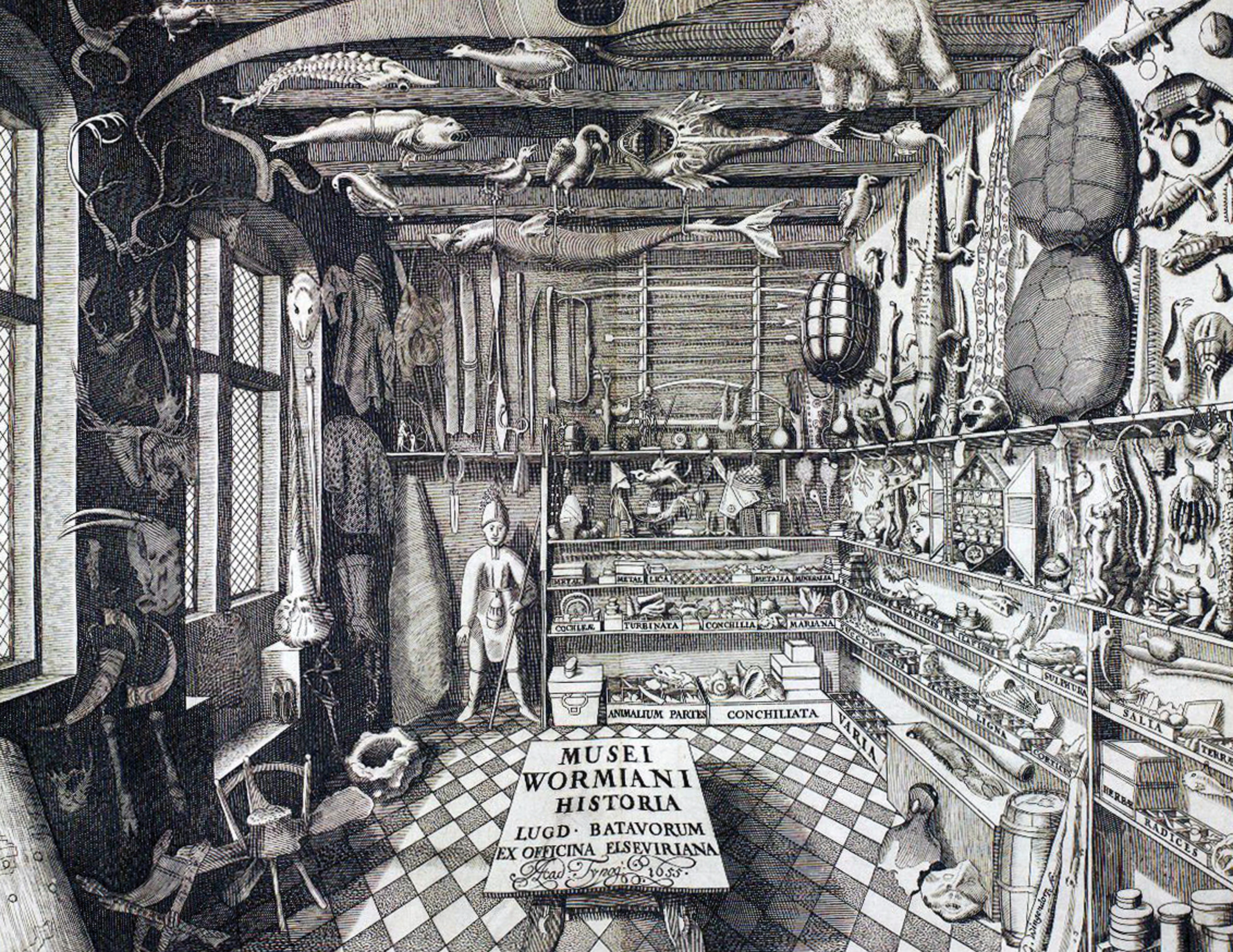
Musei Wormiani Historia, 1655
We collectively collect, but why and for whom? How can a story be convincing enough to give life to a worthless object. How does knowledge affect what we see?
The frontispiece from the Museum Wormianum, a printed engraving in the catalog of 1655 listing the contents of Ole Worm's cabinet of curiosities, which consisted of minerals, plants, animals, and man-made objects.
An overwhelming curiosity made collectors hunt not for what was beautiful and emblematic but for the strange and incomprehensible.
‘Until the sixteenth century collecting was the prerogative of princes, who’s interest concentrated on objects that were noth beautiful and precious, thus reinforcing their wealth and power. [...]
Ancient Rome had seen a brief blossoming of a culture of collecting, mainly of Greek works of art, but with the empire that, too, vanished.’
from: Philipp Blom, To Have and to Hold, an Intimate History of Collectors and Collecting, Penguin, 2002
The frontispiece from the Museum Wormianum, a printed engraving in the catalog of 1655 listing the contents of Ole Worm's cabinet of curiosities, which consisted of minerals, plants, animals, and man-made objects.
An overwhelming curiosity made collectors hunt not for what was beautiful and emblematic but for the strange and incomprehensible.
‘Until the sixteenth century collecting was the prerogative of princes, who’s interest concentrated on objects that were noth beautiful and precious, thus reinforcing their wealth and power. [...]
Ancient Rome had seen a brief blossoming of a culture of collecting, mainly of Greek works of art, but with the empire that, too, vanished.’
from: Philipp Blom, To Have and to Hold, an Intimate History of Collectors and Collecting, Penguin, 2002